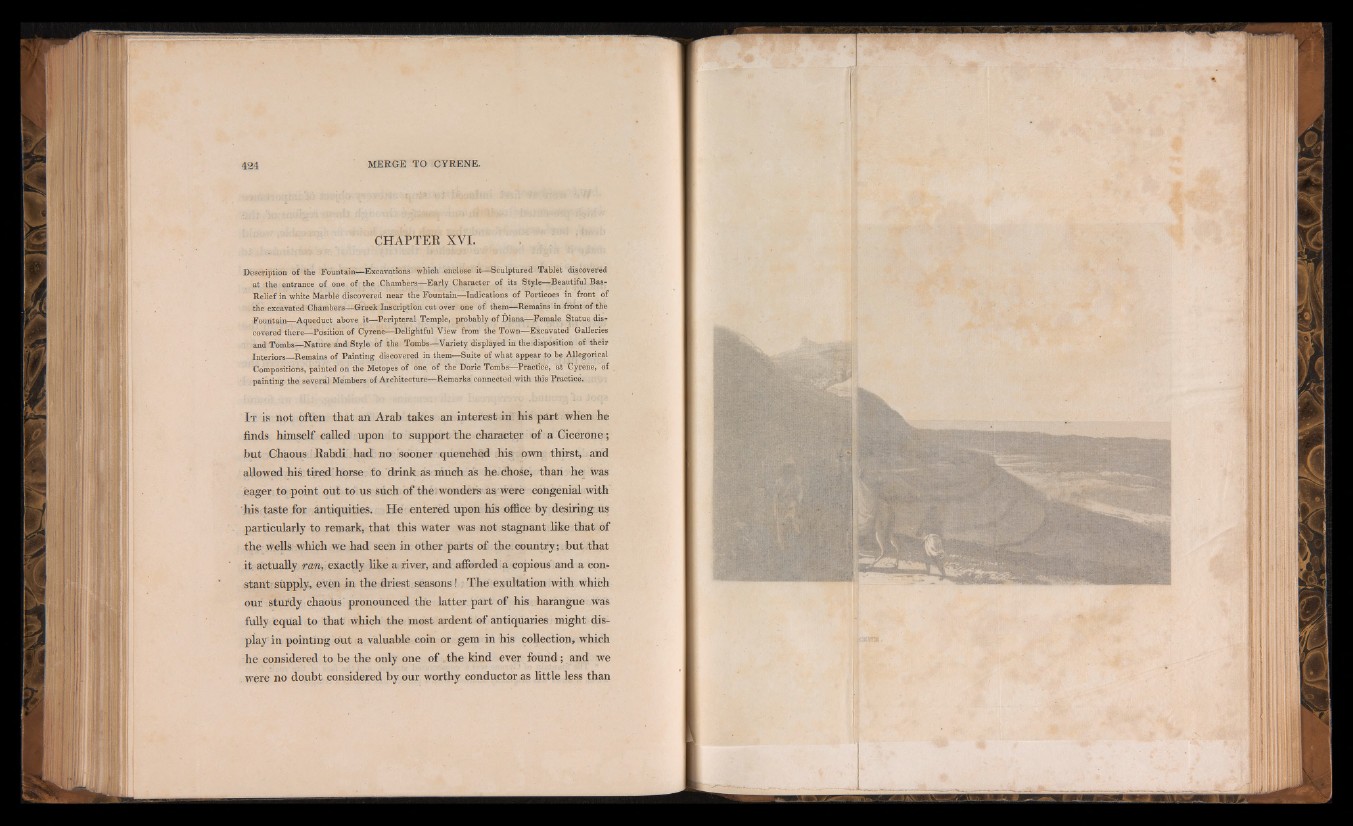
CHAPTER XVI.
Description of the Fountain—Excavations which enclose it—Sculptured Tablet discovered
at the entrance of one of the Chambers—Early Character of its Style—Beautiful Bas-
Relief in white Marble discovered near the Fountain—Indications of Porticoes in front of
the excavated Chambers—Greek Inscription cut over one of them—Remains in front of the
Fountain—Aqueduct, above it—Peripteral Temple, probably of Diana—Female Statue discovered
there—Position of Cyrene—Delightful View' from the Town—Excavated Galleries
and Tombs—Nature and Style of the Tombs—Variety displayed in theidispOsition of their
Interiors Remains of Painting discovered in them—Suite of what appear to be Allegorical
Compositions, painted on the Metopes of one of the Doric Tombs—Practice, at Cyrene, of
painting the several Members of Architecture—Remarks connected with this Practice,
I t is not often that an Arab takes an interest in his part when he
finds himself called upon to support the character of a Cicerone;
but Chaous Rabdi had no sooner quenched his own thirst, and
allowed his tired horse to drink as much as he. chose, than he was
eager to point out to us such of the, wonders aswere congenial with
his taste for antiquities. He entered upon his office by desiring us
particularly to remark, that this water was not stagnant like that of
the Wells which we had seen in other parts of the country;. but that
it actually ran, exactly like a river, and afforded a copious and a con-
stant siipply, even in the driest seasons! The exultation with which
our sturdy chaous pronounced the latter part of his harangue was
fully equal to that which the most ardent of antiquaries might display
in pointing out a valuable coin or gem in his collection, which
he considered to be the only one of the kind ever found; and we
were no doubt considered by our worthy conductor as little less than